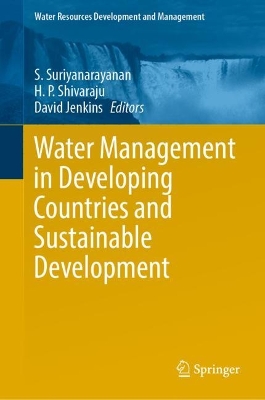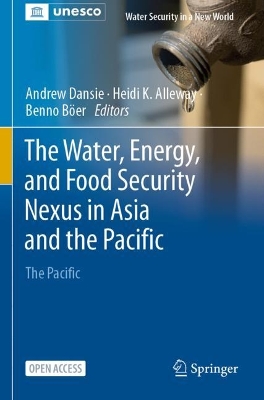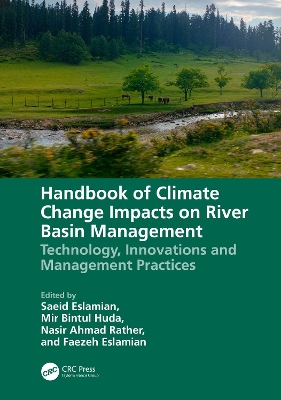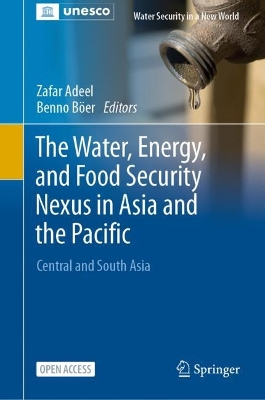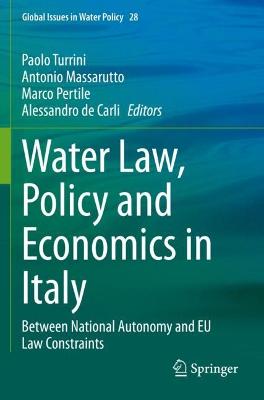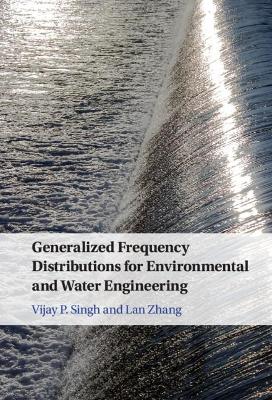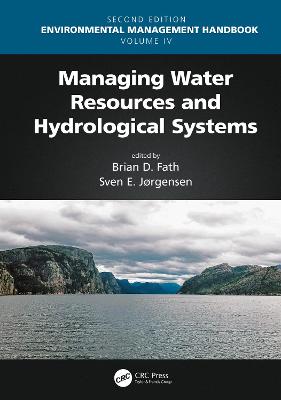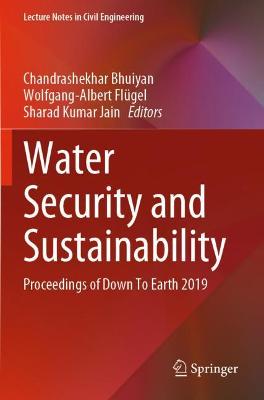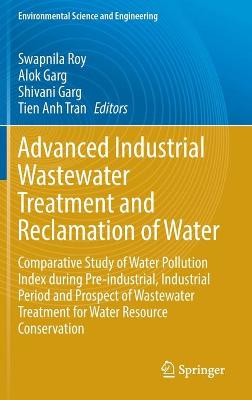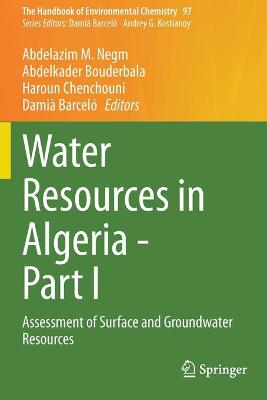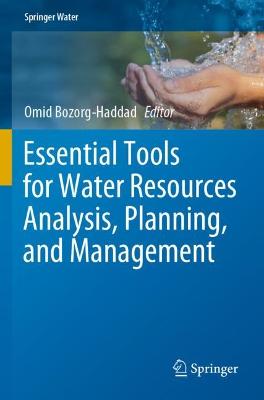Sustainability of Natural Resources
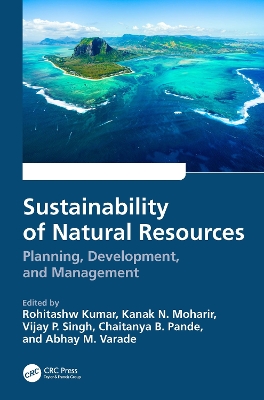 portes grátis
portes grátis
Sustainability of Natural Resources
Planning, Development, and Management
Pande, Chaitanya B.; Varade, Abhay M.; Kumar, Rohitashw; Moharir, Kanak N.; Singh, Vijay P.
Taylor & Francis Ltd
06/2024
382
Dura
Inglês
9781032295312
Pré-lançamento - envio 15 a 20 dias após a sua edição
9.12 References. Chapter 10 Delineation of Groundwater Prospect Zones Based on Earth Observation Data and AHP Modelling: A Study from Basaltic Rock Formation. 10.1 Introduction. 10.2. Study area description. 10.3. Materials and Methods. 10.4 Results and discussion. 10.5 Groundwater prospective zone mapping. 10.6. Validation. 10.7. Conclusion. 10.8 References. Chapter 11 Hydro-geochemical Evaluation of Phreatic Groundwater for Assessing Drinking and Irrigation Appropriateness- A Case Study of Chandrapur Watershed. 11.1 Introduction. 11.2 Fluorite (Caf2) Mineralization in Geological Environment. 11.3 Study Area Details. 11.4 Materials and Methods. 11.5 Physico-Chemical Characteristics of Groundwater. 11.6 Discussion on Groundwater Appropriateness. 11.7 F- Contents from Study Area. 11.8 Conclusions. 11.9 References. Chapter 12 Variability of Gound water Quality in Quaternary Aquifers of Cauvery and Vennar sub-basins within Cauvery Delta, Southern India. 12.1 Introduction. 12.2 Materials and Methods. 12.3 Results and discussion. 12.4 Drinking water quality. 12.5 Water quality index. 12.6 Irrigation suitability. 12.7 Hydro-geochemical processes. 12.8 Gibbs plot. 12.9 Chadha diagram. 12.10 Conclusions. 12.11 References. Chapter 13 Groundwater Potential Zones Mapping based on the ANN, ML models, Using AHP and MIF techniques. 13.1 Introduction. 13.2. Methods for identification of groundwater potential zones 13.3 Multi Influence Factor (MIF). 13.4 Machine Learning Models (ML). 13.5 Hybrid Intelligence Approach. 13.6 Conclusion and Recommendations. 13.7 References. Chapter 14 Irrigation water requirement and estimation of ETo based on the Remote Sensing, GIS and other technologies. 14.1 Introduction. 14.2 Potential and references evapotranspiration. 14.3 Potential evapotranspiration. 14.4 Reference crop evapotranspiration. 14.5 Effective Precipitation (EP) Definition. 14.6 Measurements of effective rainfall. 14.7 Net Irrigation Water Requirement (NIWR). 14.8 Datasets sources of to estimate reference evapotranspiration (ETo). 14.9 Calculation of reference evaporation. 14.10 Approaches used for estimating the reference evapotranspiration (ETo) and crop water requirements (CWR). 14.11. Traditional methods for estimating (ETo). 14.12 Temperature-Based Methods. 14.13. Lysimeter experiments. 14.14 Eddy covariance. 14.15. Remote sensing energy balance. 14.16. Crop Evapotranspiration (ETc) and Crop Water Requirements (CWR). 14.17. Artificial intelligence methods for estimating ET0. 14.18 Conclusions. 14.19 References. Chapter 15 Smart irrigation water using sensors and internet of things (IOT). 15.1 Introduction. 15.2 Benefits of smart irrigation system and datasets. 15.3 Smart irrigation system Components. 15.4 ARDUINO Uno. 15.5 DHTll Temperature and Humidity Sensor. 15.6 Connecter wire. 15.7 Different Sensors Used in Smart Irrigation System. 15.8 Algorithms Used for Smart Irrigation. 15.9 Applications of Smart Irrigation in Agricultural Water Saving. 15.10 Conclusions and recommendations. 15.11 References. Chapter 16 Analysis of Climate Variability and Change Impact on Rainfall Trend Pattern in Nigeria: A Case Study of Calabar River Basin, South-eastern Nigeria. 16.1 Introduction. 16.2 Aim and Objectives. 16.3 Study Area. 16.4 Literature Review. 16.5 Methodology. 16.6 Results. 16.7 Discussions and recommendations. 16.8 Conclusion. 16.9 References. Chapter 17 Assessment of Hydrochemistry and Water Quality Index for Groundwater Quality - A Case Study of Maharashtra. 17.1 Introduction.
17.2 Study Area Setup. 17.3 Methodology. 17.4 Results and Discussion. 17.5 Physicochemical parameters of groundwater. 17.6 Water types. 17.7 Correlation Analysis. 17.8 Correlation investigation of groundwater. 17.9 Water Quality Index. 17.10 Conclusions. 17.11 References. Chapter 18 Assessment of Heavy Metal Contamination in Water and Sediments of Major Industrial Streams. 18.1. Introduction. 18.2. Materials and methods. 18.3. Results and Discussion. 18.4. Conclusion. 18.5 References. Chapter 19 Water Waste Treatment and Reuse for Sustainability. 19.1 Introduction. 19.2 Types of Water Waste. 19.3 Goals of Wastewater Management. 19.4 Management of Water Quality. 19.5 Grouping of Pollutants in Wastewater. 19.6 Categorization of Methods Used in Treating Wastewater. 19.7 Characterization of Wastewater. 19.8 Wastewater objectives. 19.9 Water waste treatment process. 19.10 Water Reuse. 19.11 Wastewater reuse. 19.12 Factors Affecting Reusability of Wastewater. 19.13 Additional Water Quality Parameters to Consider for Wastewater Reuse. 19.14 Applications of Water Reuse. 19.15 Regulations for Water Reuse. 19.16 Challenges on Wastewater Treatment and Reuse. 19.17 Conclusion. 19.18 References. Chapter 20 Watershed Development- A Holistic Approach for Sustainable Agriculture. 20.1 Introduction. 20.2 Characteristics of Watersheds 20.3 Classification of Watershed. 20.4 Watershed Characteristics: Physical and Geomorphologic Characteristics associated with Watersheds. 20.5 Watershed Management and its Objectives. 20.6 Effect of Physical Properties on Watershed Management. 20.7 Effect of Geomorphologic Factors and Associated Processes on Watershed Management. 20.8 Scope of Watershed Management. 20.9 Watershed Management: Indian Perspective. 20.10 Problems and Constraints in Watershed Management. 20.11 New Prospects and Opportunities Associated with Watershed Management. 20.12 Land capability and its Classification. 20.13 Impact on Watershed due to Land Use. 20.14 Planning the Land Use. 20.15 Applications of Remote Sensing and Geographical Information System (GIS) in Watershed Planning. 20.16 Watershed Policy Analysis and Decision Support. 20.17 Conclusion. 20.18 References
9.12 References. Chapter 10 Delineation of Groundwater Prospect Zones Based on Earth Observation Data and AHP Modelling: A Study from Basaltic Rock Formation. 10.1 Introduction. 10.2. Study area description. 10.3. Materials and Methods. 10.4 Results and discussion. 10.5 Groundwater prospective zone mapping. 10.6. Validation. 10.7. Conclusion. 10.8 References. Chapter 11 Hydro-geochemical Evaluation of Phreatic Groundwater for Assessing Drinking and Irrigation Appropriateness- A Case Study of Chandrapur Watershed. 11.1 Introduction. 11.2 Fluorite (Caf2) Mineralization in Geological Environment. 11.3 Study Area Details. 11.4 Materials and Methods. 11.5 Physico-Chemical Characteristics of Groundwater. 11.6 Discussion on Groundwater Appropriateness. 11.7 F- Contents from Study Area. 11.8 Conclusions. 11.9 References. Chapter 12 Variability of Gound water Quality in Quaternary Aquifers of Cauvery and Vennar sub-basins within Cauvery Delta, Southern India. 12.1 Introduction. 12.2 Materials and Methods. 12.3 Results and discussion. 12.4 Drinking water quality. 12.5 Water quality index. 12.6 Irrigation suitability. 12.7 Hydro-geochemical processes. 12.8 Gibbs plot. 12.9 Chadha diagram. 12.10 Conclusions. 12.11 References. Chapter 13 Groundwater Potential Zones Mapping based on the ANN, ML models, Using AHP and MIF techniques. 13.1 Introduction. 13.2. Methods for identification of groundwater potential zones 13.3 Multi Influence Factor (MIF). 13.4 Machine Learning Models (ML). 13.5 Hybrid Intelligence Approach. 13.6 Conclusion and Recommendations. 13.7 References. Chapter 14 Irrigation water requirement and estimation of ETo based on the Remote Sensing, GIS and other technologies. 14.1 Introduction. 14.2 Potential and references evapotranspiration. 14.3 Potential evapotranspiration. 14.4 Reference crop evapotranspiration. 14.5 Effective Precipitation (EP) Definition. 14.6 Measurements of effective rainfall. 14.7 Net Irrigation Water Requirement (NIWR). 14.8 Datasets sources of to estimate reference evapotranspiration (ETo). 14.9 Calculation of reference evaporation. 14.10 Approaches used for estimating the reference evapotranspiration (ETo) and crop water requirements (CWR). 14.11. Traditional methods for estimating (ETo). 14.12 Temperature-Based Methods. 14.13. Lysimeter experiments. 14.14 Eddy covariance. 14.15. Remote sensing energy balance. 14.16. Crop Evapotranspiration (ETc) and Crop Water Requirements (CWR). 14.17. Artificial intelligence methods for estimating ET0. 14.18 Conclusions. 14.19 References. Chapter 15 Smart irrigation water using sensors and internet of things (IOT). 15.1 Introduction. 15.2 Benefits of smart irrigation system and datasets. 15.3 Smart irrigation system Components. 15.4 ARDUINO Uno. 15.5 DHTll Temperature and Humidity Sensor. 15.6 Connecter wire. 15.7 Different Sensors Used in Smart Irrigation System. 15.8 Algorithms Used for Smart Irrigation. 15.9 Applications of Smart Irrigation in Agricultural Water Saving. 15.10 Conclusions and recommendations. 15.11 References. Chapter 16 Analysis of Climate Variability and Change Impact on Rainfall Trend Pattern in Nigeria: A Case Study of Calabar River Basin, South-eastern Nigeria. 16.1 Introduction. 16.2 Aim and Objectives. 16.3 Study Area. 16.4 Literature Review. 16.5 Methodology. 16.6 Results. 16.7 Discussions and recommendations. 16.8 Conclusion. 16.9 References. Chapter 17 Assessment of Hydrochemistry and Water Quality Index for Groundwater Quality - A Case Study of Maharashtra. 17.1 Introduction.
17.2 Study Area Setup. 17.3 Methodology. 17.4 Results and Discussion. 17.5 Physicochemical parameters of groundwater. 17.6 Water types. 17.7 Correlation Analysis. 17.8 Correlation investigation of groundwater. 17.9 Water Quality Index. 17.10 Conclusions. 17.11 References. Chapter 18 Assessment of Heavy Metal Contamination in Water and Sediments of Major Industrial Streams. 18.1. Introduction. 18.2. Materials and methods. 18.3. Results and Discussion. 18.4. Conclusion. 18.5 References. Chapter 19 Water Waste Treatment and Reuse for Sustainability. 19.1 Introduction. 19.2 Types of Water Waste. 19.3 Goals of Wastewater Management. 19.4 Management of Water Quality. 19.5 Grouping of Pollutants in Wastewater. 19.6 Categorization of Methods Used in Treating Wastewater. 19.7 Characterization of Wastewater. 19.8 Wastewater objectives. 19.9 Water waste treatment process. 19.10 Water Reuse. 19.11 Wastewater reuse. 19.12 Factors Affecting Reusability of Wastewater. 19.13 Additional Water Quality Parameters to Consider for Wastewater Reuse. 19.14 Applications of Water Reuse. 19.15 Regulations for Water Reuse. 19.16 Challenges on Wastewater Treatment and Reuse. 19.17 Conclusion. 19.18 References. Chapter 20 Watershed Development- A Holistic Approach for Sustainable Agriculture. 20.1 Introduction. 20.2 Characteristics of Watersheds 20.3 Classification of Watershed. 20.4 Watershed Characteristics: Physical and Geomorphologic Characteristics associated with Watersheds. 20.5 Watershed Management and its Objectives. 20.6 Effect of Physical Properties on Watershed Management. 20.7 Effect of Geomorphologic Factors and Associated Processes on Watershed Management. 20.8 Scope of Watershed Management. 20.9 Watershed Management: Indian Perspective. 20.10 Problems and Constraints in Watershed Management. 20.11 New Prospects and Opportunities Associated with Watershed Management. 20.12 Land capability and its Classification. 20.13 Impact on Watershed due to Land Use. 20.14 Planning the Land Use. 20.15 Applications of Remote Sensing and Geographical Information System (GIS) in Watershed Planning. 20.16 Watershed Policy Analysis and Decision Support. 20.17 Conclusion. 20.18 References

